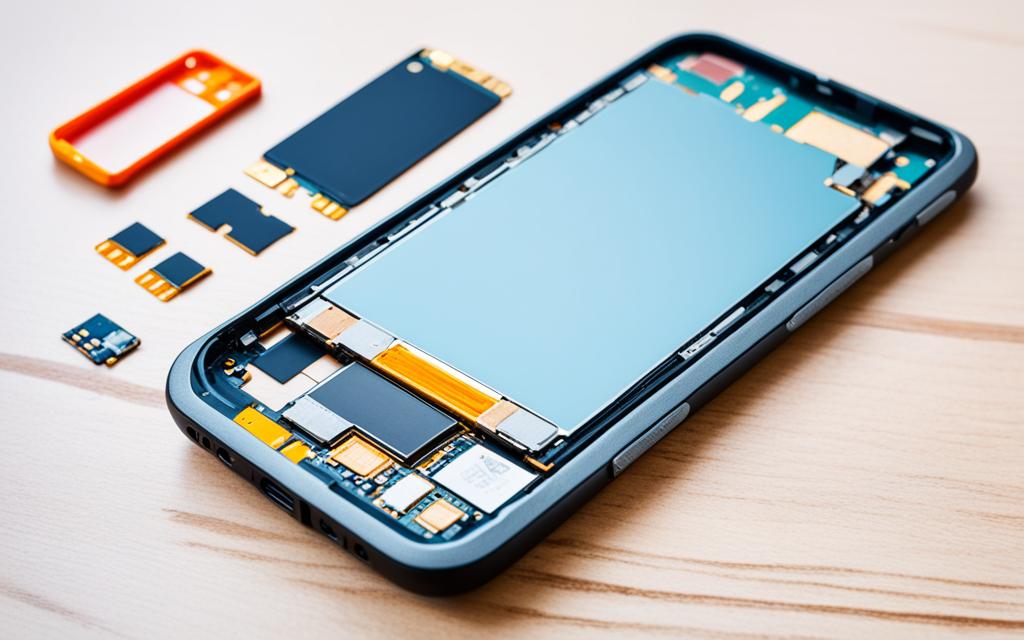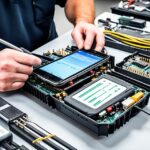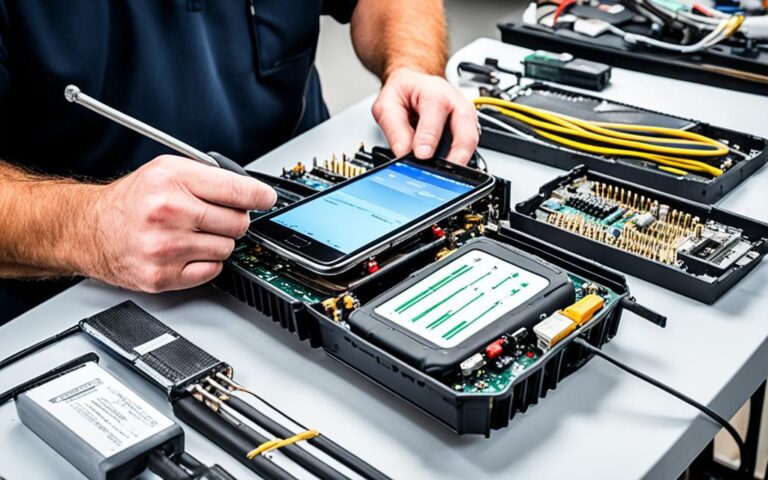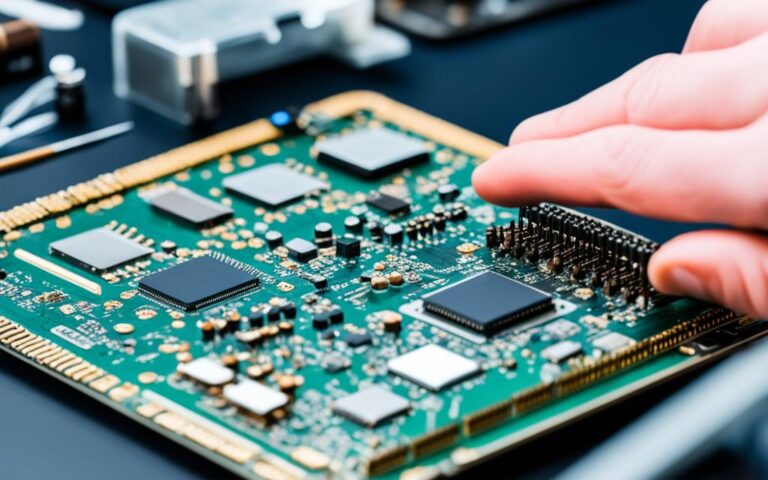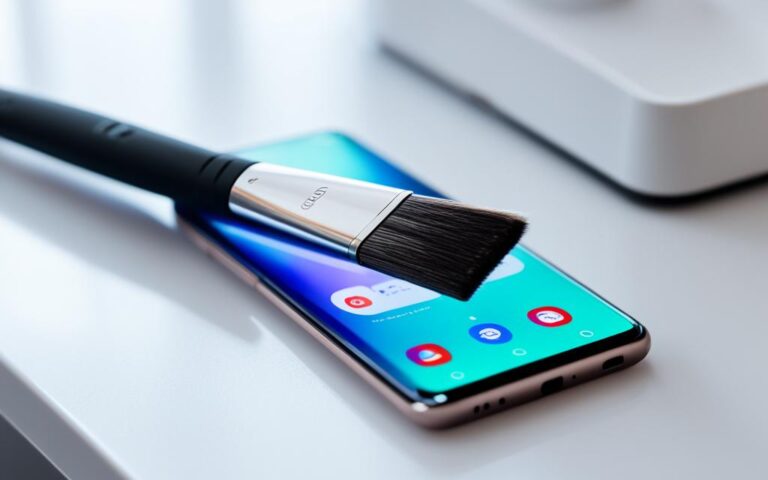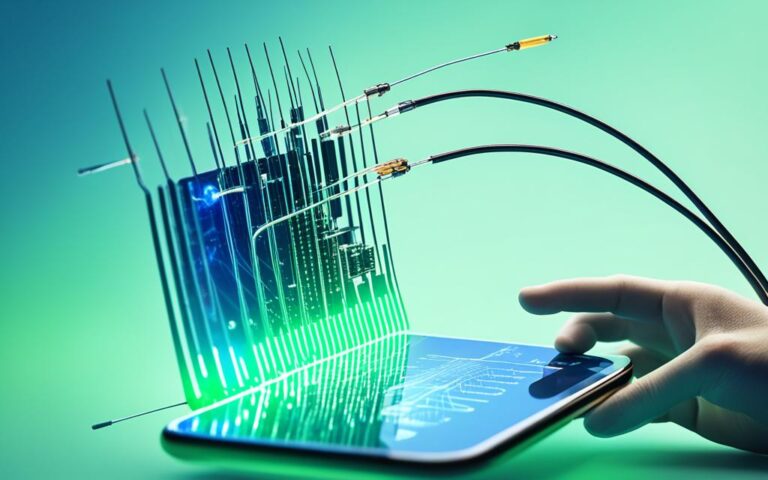Mobile Device Wi-Fi Module Repairs for Better Connectivity
If your mobile device is experiencing Wi-Fi connectivity issues, it could be due to a hardware or software problem. The Wi-Fi signal might be disrupted by external factors, such as other Wi-Fi signals or other frequencies. It could also be due to incorrect network settings or a damaged cable. Additionally, parental control settings or a thick phone case can interfere with the Wi-Fi connection. It’s important to check if you have exceeded your data limit or if your device is infected with malware. To fix the Wi-Fi connection on your Android device, you can try restarting your device, checking existing settings, or resetting your network settings.
When it comes to maintaining a seamless Wi-Fi experience, resolving issues with your mobile device’s Wi-Fi module is crucial. Whether it’s a faulty hardware component or a software glitch, addressing these problems promptly is essential for better connectivity. In this article, we will explore common reasons for Wi-Fi connection issues on Android devices and provide troubleshooting tips to help you rectify them.
Common Reasons for Wi-Fi Connection Issues on Android Devices
If you’re experiencing Wi-Fi connection issues on your Android device, there are several common reasons that could be causing the problem.
1. Wi-Fi Signal Disruption
Disruptions in the Wi-Fi signal can occur due to interference from other signals or frequencies in your area. This can weaken the strength of your Wi-Fi connection and result in slow or unstable internet speeds.
2. Network or Password Incorrect
Incorrect network or password settings can prevent your Android device from connecting to the Wi-Fi network. Double-check your network name (SSID) and password to ensure they are correct.
3. Wi-Fi Turned Off
It may seem obvious, but sometimes the Wi-Fi on your Android device gets accidentally turned off. Check your device’s Wi-Fi settings to make sure it is switched on and actively searching for nearby networks.
4. Modem Signal Blocked or Distant
If the Wi-Fi signal from your modem/router is blocked by walls, furniture, or other obstacles, it may struggle to reach your Android device. Additionally, if the modem/router is too far away from your device, the signal strength might be weak, resulting in a poor connection.
5. Damaged or Inappropriate Cable
A damaged or inappropriate cable can also cause Wi-Fi connection issues on your Android device. Inspect the cable connecting your modem/router to ensure it is intact and suitable for transmitting a strong Wi-Fi signal.
6. Parental Control Settings Blocking Connection
If your Android device is set with parental controls, certain websites or apps may be restricted, which can block the Wi-Fi connection. Review your device’s parental control settings and adjust them as needed.
7. Out of Data
If your mobile data plan has reached its limit, your Android device may automatically switch off Wi-Fi to preserve data usage. Check your data usage and consider upgrading your plan if necessary.
8. Thick Phone Case or Interference
A thick phone case or interference from other electronic devices can weaken the Wi-Fi signal on your Android device. Remove any thick phone cases and keep your device away from other electronic devices that might cause interference.
9. Phone Infected with Malware
Malware or malicious software on your Android device can disrupt the Wi-Fi connection. Run a thorough antivirus scan on your device to detect and remove any malware that may be causing the issue.
10. VPN Slowing Connection
If you have a VPN (Virtual Private Network) enabled on your Android device, it can sometimes slow down your Wi-Fi connection due to the encryption and routing processes. Try temporarily disabling the VPN to see if it improves your connection speed.
To resolve Wi-Fi connection issues on your Android device, it’s important to identify the specific cause of the problem and take appropriate steps to address it. Consult the troubleshooting section of this article to find solutions for these common issues.
| Common Reasons for Wi-Fi Connection Issues on Android Devices | Potential Solutions |
|---|---|
| Wi-Fi Signal Disruption | Try changing your Wi-Fi channel or moving closer to the modem/router. |
| Network or Password Incorrect | Double-check and re-enter the correct network name (SSID) and password. |
| Wi-Fi Turned Off | Ensure that the Wi-Fi is turned on in your device settings. |
| Modem Signal Blocked or Distant | Reposition your modem/router to obtain a stronger signal and minimize obstacles. |
| Damaged or Inappropriate Cable | Replace damaged cables with compatible ones suitable for transmitting Wi-Fi signals. |
| Parental Control Settings Blocking Connection | Adjust your device’s parental control settings to allow Wi-Fi access. |
| Out of Data | Check your mobile data plan and consider increasing your data limit. |
| Thick Phone Case or Interference | Remove thick phone cases and keep your device away from other electronic devices. |
| Phone Infected with Malware | Run antivirus software to scan and remove malware from your Android device. |
| VPN Slowing Connection | Temporarily disable the VPN on your device to improve connection speed. |
Troubleshooting Wi-Fi Connection Issues on Android Devices
If you’re experiencing Wi-Fi connection issues on your Android device, there are several troubleshooting steps you can take to resolve the problem. Follow these suggestions to improve your Wi-Fi connectivity:
- Restart your Android device: Sometimes, a simple restart can resolve temporary connectivity issues. Turn your device off and on again to refresh the Wi-Fi connection.
- Check existing settings: Review your device’s Wi-Fi settings, including airplane mode, auto-reconnect, parental controls, and location settings. Make sure these settings are appropriately configured.
- Reset network settings: If the issue persists, try resetting your network settings. This option will remove saved networks and their configurations, so be prepared to reconnect to Wi-Fi networks and re-enter passwords.
- Check modem/router connections: Ensure that the cables connecting your modem/router to the internet and power source are secure and undamaged. Loose or damaged cables can disrupt the Wi-Fi signal.
- Use a Wireless Access Point (WAP): If you have multiple devices connected to your Wi-Fi network, consider using a WAP to expand the network’s device capacity.
- Adjust frequencies: Wi-Fi signals operate on different frequencies, and interference can occur if multiple devices are using the same frequency. Try adjusting the frequency settings on your modem/router to avoid potential conflicts.
- Use a Wi-Fi extender or adapter: If your Android device is far away from the modem/router or if there are physical barriers obstructing the Wi-Fi signal, consider using a Wi-Fi extender or adapter to enhance the signal strength and range.
- Contact the Wi-Fi network host or your Internet Service Provider (ISP): If none of the previous steps have resolved the issue, reach out to the Wi-Fi network host or your ISP for further assistance. They can provide additional guidance and troubleshoot any underlying network problems.
Note: Remember, Wi-Fi connectivity issues can stem from various factors, including hardware or software problems, external signal disruptions, incorrect settings, or network infrastructure issues. By following these troubleshooting steps, you can improve your Android device’s Wi-Fi connection and enjoy uninterrupted internet access.
Common Wi-Fi Connection Problems
When troubleshooting Wi-Fi connection issues on Android devices, it’s important to understand some common problems that may arise:
| Problem | Possible Solution |
|---|---|
| Weak Wi-Fi signal | Use a Wi-Fi extender or adapter to improve signal strength |
| Incorrect network settings | Check and adjust network settings on your Android device |
| Modem/router connection issues | Ensure all cables are securely connected and undamaged |
| Interference from other devices | Adjust Wi-Fi frequencies to reduce interference |
| Outdated device software | Keep your Android device updated with the latest software and firmware |
By addressing these common problems and following the troubleshooting steps outlined above, you should be able to resolve Wi-Fi connection issues on your Android device and enjoy a seamless internet experience.
Troubleshooting Wi-Fi Connection Issues on Android Devices (continued)
When troubleshooting Wi-Fi connection issues on your Android device, there are several important steps to take. By following these guidelines, you can identify and resolve common Wi-Fi problems.
1. Checking AP and Router Settings
Ensure that your access point (AP) and router settings are properly configured. Make sure the network settings are correct and that the Wi-Fi signal is enabled.
2. Verifying Wireless Adapter
Check if the wireless adapter on your Android device is enabled and functioning correctly. If not, enable it in the device settings.
3. Checking SSID and IP Address
Verify that the SSID (Service Set Identifier) and IP address settings are accurate. The SSID is the name of your Wi-Fi network, while the IP address is a unique identifier for your device on the network.
4. Verifying Network Connection with Ping
Use the Ping utility to verify your network connection. Ping sends a small packet of data to a specific IP address and measures the response time. This can help identify any network connectivity issues.
5. Checking Security Settings
Ensure that your Wi-Fi security settings are correct. Make sure the encryption type, password, and other security configurations are properly set up.
6. Checking RADIUS Settings
If you are connecting to a network that uses a RADIUS (Remote Authentication Dial-In User Service) server for authentication, check the RADIUS settings on your Android device. Verify the server address and any other required parameters.
7. Checking 802.1X EAP Issues
If you are encountering issues with the 802.1X EAP (Extensible Authentication Protocol) configuration, double-check the settings on your Android device. Ensure that the EAP method and other parameters match those required by the network.
By systematically going through these troubleshooting steps, you can identify and resolve Wi-Fi connection issues on your Android device.
In the next section, we will discuss the conclusion of this article and provide some final thoughts and recommendations.
Conclusion
Troubleshooting wireless connection issues on your Android device can be a complex task, but by following the steps outlined in this article, you can identify and resolve common issues. It’s important to report any trouble with good information, including details about the issue, the devices involved, and the time and date of the problem. Understanding infrastructure failure points can also help in identifying the source of the problem. Remember to consult with a professional if you are unable to resolve the Wi-Fi connection issues on your own.
